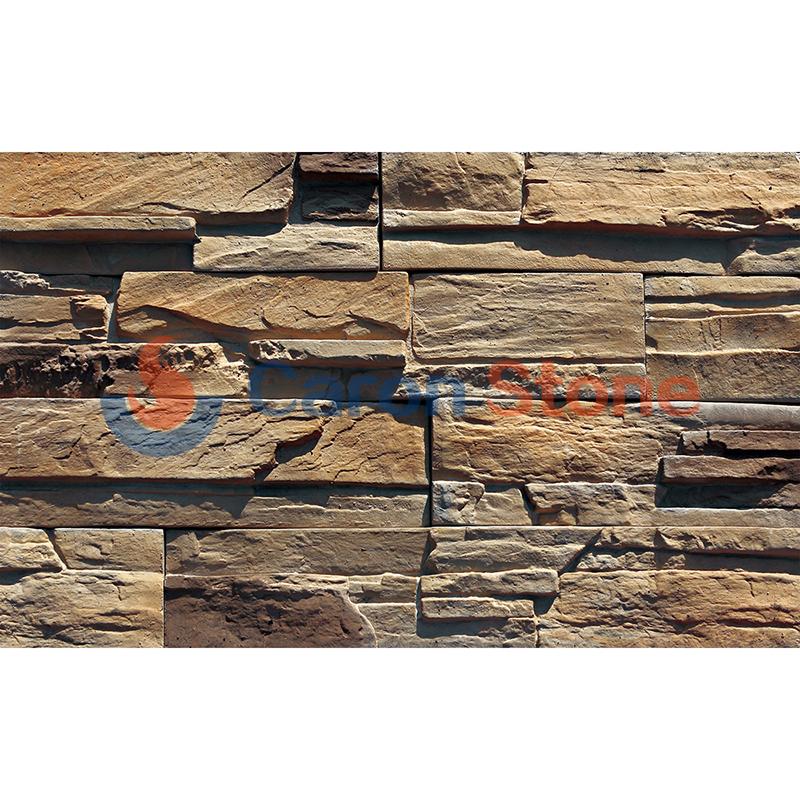
Comparative Analysis Of Artificial Stone And Natural Stone In Cultural Stone Wall Design -
Cultural stone wall cladding is becoming a popular decorative choice in modern architecture and interior design. Apart from adding special visual appeal to the area, cultural stone walls improve the general ambiance. But when selecting cultured stone wall coverings, the difference between manmade and natural stone usually causes uncertainty. Both materials have traits of their own, different benefits and drawbacks. This article will delve into the different performances of artificial stone and natural stone in cultural stone wall design to help you make wise choices in your design.

GB-A17 artificial cultural stone outside wall cover
Natural stone: a treasure of nature
As the name suggests, natural stone is a raw commodity taken straight from the ground. Among the several varieties are marble, granite, limestone, etc.; each has a different texture and color. Natural beauty and priceless distinctiveness abound in this stuff. Natural stone is distinctive because of its rich textures and colors, which are created by millions of years of geological processes and give every stone an unrepeatable character.
First of all, in cultural stone wall design, the weight and texture of real stone reveal an amazing degree of luxury. The wall is more natural since every bit of natural stone has been naturally sculpted to exhibit different texture and color. In addition, natural stone is also very durable, able to withstand the test of time and not easily fade or be damaged. Natural stone is sometimes more costly, thus if you are on a budget it is not always the ideal option.
Artificial stone: modern innovation
Artificial stone, unlike natural stone, is produced from synthetic elements mostly recycled stone and synthetic stone. The main advantages of engineered stone are its controllability and consistency. By changing the material formula and production technique, manufacturers may regulate the color, texture, and quality of the stone thereby guaranteeing consistency of every stone. This controllability allows engineered stone to offer more choice and flexibility in design.
In the production process of artificial stone, recycled and recycled materials can be integrated into it, which makes it also excellent in terms of environmental protection. Furthermore, since engineered stone is easier to clean and maintain and usually more resistant to dirt and scratches than real stone, it requires rather low care. Generally speaking, engineered stone is less expensive than natural stone, so it’s an excellent option for budget projects.
Artificial stone has several drawbacks, albeit as well. For example, although modern technology can simulate the appearance of natural stone, its texture and weight still cannot fully match the realism of natural stone. Furthermore, fake stone could exhibit surface wear or color fading over time; although this is rare, it calls particular notice in busy commercial areas.
Comparative analysis: the key to selection
The choice of artificial or natural stone in the design of cultural stone walls depends mostly on design requirements and budget. If your design goal is to pursue the uniqueness and luxury of natural stone and you have sufficient budget, natural stone is undoubtedly the best choice. It shows remarkable quality and eternal value in addition to priceless visual effects.
Engineered stone is a terrific option, but, if your design demands more options in color and texture and your budget is more sensitive. Many commercial and residential projects use it since of its financial, environmental and maintenance benefits.

China cultured stone artificial country rubble fieldstone wall cladding GB-I19
Overall, artificial stone and natural stone each have their own merits in cultural stone wall design, and the final choice should be determined based on specific design needs, budget, and long-term maintenance considerations. Natural stone has won the favor of the high-end market with its unique texture and lasting beauty, while artificial stone has demonstrated strong competitiveness in modern design with its innovative production technology and affordable prices. By means of the analysis in this post, I aim to help you to grasp these two materials better and guide your choice for the design of your cultural stone wall.




